The disappearance of real-world disk retail
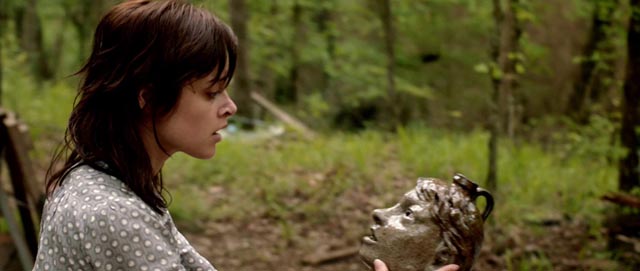
For the addict – and I freely admit that I’m addicted to DVDs and Blu-rays, by far preferring to own a shiny disk than watch a streaming image – the questions of supply and access are crucial. While disks are still being released in numbers too large for any one viewer to keep up, the increasing popularity of streaming has been causing problems with getting physical access to all those disks. I used to be able to spend hours browsing in multiple stores here in Winnipeg, but over the past five years or so, those options have been shrinking
When the US electronics and appliance giant Best Buy bought up Canada’s Future Shop, the movie section of the latter began to shrink almost immediately. Then when Future Shop was closed down completely, the movie section of Best Buy began to decline; for a while actual shelf space remained the same, but the quantity of stock withered away. Last Fall, with store renovations, movies were all but eliminated in Best Buy’s physical stores although you can still order on-line. This illustrates part of the vicious cycle behind the current state of disks: with increasing on-line access (often with lower prices), fewer people were buying in-store, which caused a gradual reduction in stock, which in turn pushed customers to go on-line. (Although I did just find season seven of Archer and a copy of Death Race 2050 in the store closest to me.)
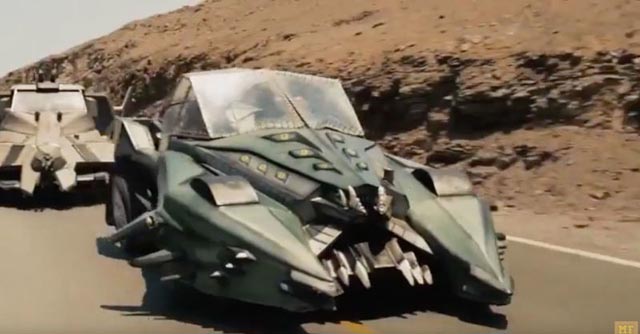
I myself do a great deal of on-line buying, both because of the availability of a broader range of titles and, yes, because of lower prices. But I love browsing. I love those moments when you stumble on something you hadn’t heard of or thought about but which suddenly grabs your attention. And the pleasure of instant gratification would often cause me to buy on the spot, even if I could have bought the disk for a few dollars less on-line. That option has now all-but vanished with the bankruptcy and closure of HMV Canada (all stores in Winnipeg finally closed this week). Except for a couple of used music/movie stores, the only place I know of that stocks new disks now is the McNally-Robinson bookstore, which has a small but eclectic movie section; the downside is that their prices are generally quite high (I confess to the sin of occasionally browsing there and then ordering on-line if I come across something interesting).
But there has been a kind of back-handed positive to the death of HMV. Winnipeg has long been renowned for its inhabitants’ passion for bargains and I’m not immune. In the past couple of months HMV has gradually been reducing prices in a protracted closing sale. While I empathize with staff who are losing their jobs (many of whom I know well by sight if not by name), I’ve been frequently scouring the two nearest locations for bargains. Knowing that time is limited, this has involved a strange kind of pressure which has actually driven me to buy a lot of stuff I wouldn’t have bothered with in the normal run of things. Which is not to say that I haven’t picked up some genuinely desirable items, like a small stack of Criterions, including Val Lewton and Jacques Tourneur’s Cat People, John Frankenheimer’s The Manchurian Candidate, Francois Truffaut’s The Soft Skin, Jacques Rivette’s Paris Belongs to Us, Bruce Beresford’s Mister Johnson, and Errol Morris’ Gates of Heaven/Vernon, Florida and The Thin Blue Line.
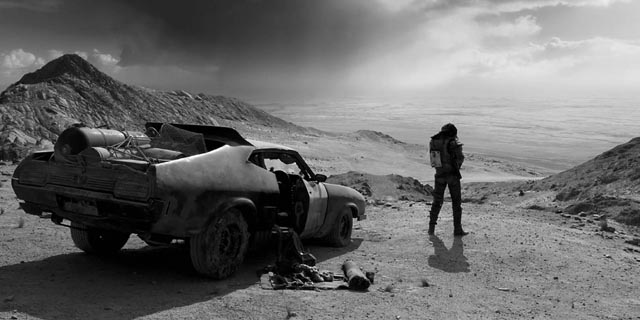
Some of these are upgrades to Blu-ray, others new acquisitions. Other upgrades include the Mad Max High Octane Collection – although the 4K Ultra disk of Fury Road is of no use to me, I was eager to see George Miller’s black-and-white version of the film (it’s very striking) as well as the two-and-a-half hour documentary about the making of the original Mad Max (which is excellent). Also, Joseph Ruben’s Dreamscape, David Cronenberg’s Dead Ringers and Rabid (the latter partially duplicating Arrow’s excellent edition, but with a few new special features), and Carrie – all from Shout! Factory’s horror subdivision Scream Factory. Also from Shout! Factory, Lamont Johnson’s You’ll Like My Mother, which I liked on TV back in the early ’70s, and Narciso Ibanez Serrador’s The House That Screamed, which I picked up as a fan of his Who Can Kill a Child? There’s also an Agnes Varda double feature from CineliciousPics, Jane B. Par Agnes V. and Kung-Fu Master, neither of which I have previously seen, and Tonino Valerii’s western Day of Anger from Arrow.
But while all of these have some inherent interest for me, I have also picked up others which I wouldn’t have bothered with if they hadn’t been “bargains”. (Of course the question here is, is it really a bargain if you’re spending money on something you wouldn’t have bothered with in the normal run of things?)
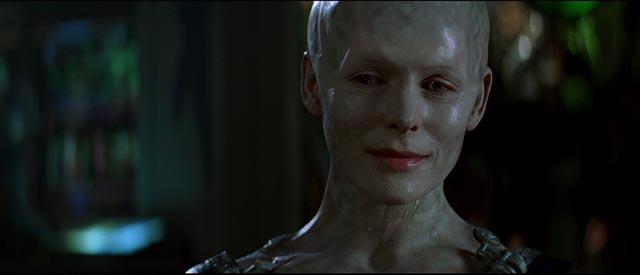
These latter include the Star Trek: The Next Generation features box set. I’ve never been a fan of ST:TNG – or for that matter any of the subsequent Star Trek incarnations (including the wretched reboot series of features) – but I still have a lot of affection for the original series and that was enough to sucker me into buying the Next Generation movie set (the first film, Generations, features some of the original cast, most significantly William Shatner). My main problem with TNG is that it always took itself way too seriously and, frankly, none of the characters was particularly interesting. The four movies are basically just oversized episodes of the TV show, mildly diverting, with occasionally interesting guest stars.
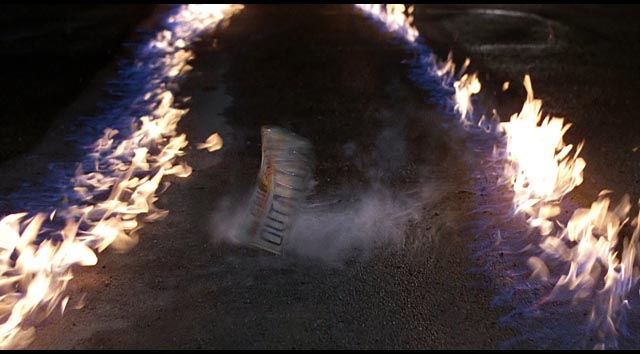
I was never much of a fan of Back to the Future, either, and yet I also picked up the Complete Adventures box set, which includes the three features, a bonus disk, plus both seasons of the animated series. I enjoy time travel stories and writer Bob Gale does manage to conjure up some pretty good paradoxes across the trilogy. But like much of Robert Zemeckis’ work, Back to the Future and its sequels are often too much – loud and grating and exhausting – and Marty is frequently irritating, doing stupid things which he has been specifically warned not to do just for the sake of plot complications. I did realize as I watched, though, that I had never actually seen the third film before, so at least I’ve now experienced the complete story arc.
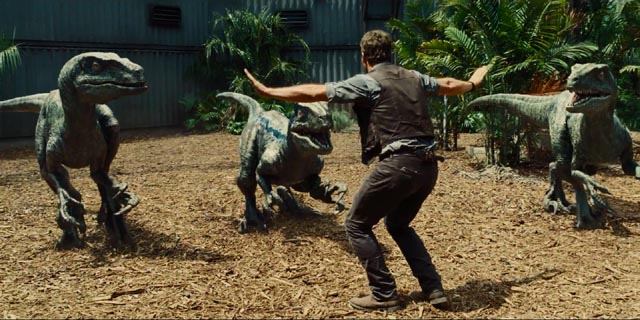
Much to my surprise, I actually quite enjoyed re-watching another series I was never a fan of: Jurassic Park. I guess this time around I was in the right mood for CG dinosaurs and the theme park adventures were engaging enough to get me past the shallow, cartoon characters and their dumb behaviour. The effects aren’t bad, though the scripts are weak … the thin narratives exist for no other reason than to prop up the CG/action set-pieces. These are essentially big-budget elaborations of Michael Crichton’s cheaper but more interesting Westworld, reiterating the theme of technology running afoul of our society’s penchant for mindless thrills and distractions.
That said, I was even more surprised to discover that Colin Trevorrow’s Jurassic World is one of the better franchise reboots to come along in some time. It makes the most of the series’ theme park element and ramps up the evil corporation subplot which was present in number two, The Lost World. Plus the characters are more engaging than those in the previous movies (though as has been widely pointed out, Bryce Dallas Howard’s high heels, while they may start out as an element of character definition, eventually become a distracting joke).
Beyond these sets, I’ve also stocked up on a lot of individual movies:
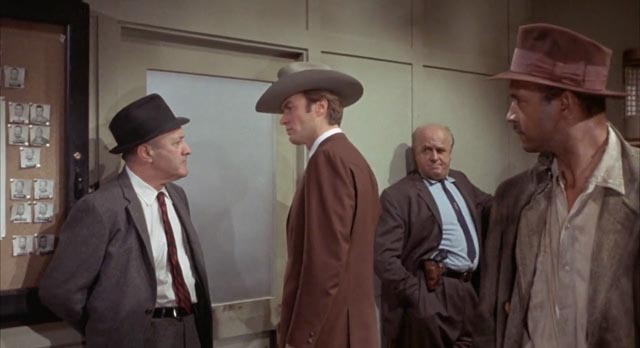
Don Siegel’s Coogan’s Bluff (1968) marked Clint Eastwood’s transition out of spaghetti westerns into mainstream stardom. It was also an obvious precursor to Dirty Harry, with its story of a tough cop who pays little attention to the rules in his pursuit of a criminal. It was also a trial run for what became the long-running (seven seasons) TV show McCloud, which was created by Coogan’s writer Herman Miller. Coogan is an Arizona deputy sent to New York to retrieve a fugitive (Don Stroud); he butts heads with the NYPD (represented by the always reliable Lee J. Cobb), gets involved with a social worker/psychologist (Susan Clark), and leaves a trail of death and destruction in his wake. I first saw this on TV back in the late ’60s/early ’70s and enjoyed the fish-out-of-water element of the rugged cowboy running loose in the big city … but it hasn’t aged well. Not just the casual sexism, but also the slack pacing and thinly-written story – I don’t think we ever learn what Stroud’s character did back in Arizona to warrant extradition; he just seems to be a sociopathic “hippie”, a rough sketch for Andy Robinson’s Scorpio in Dirty Harry.
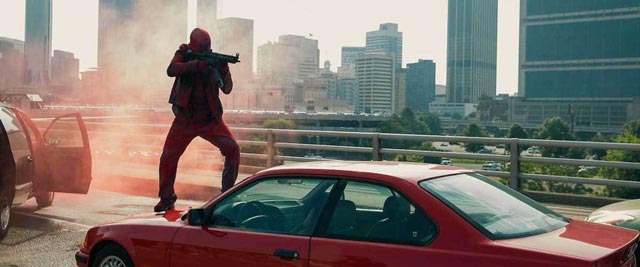
John Hillcoat’s Triple 9 (2016) deals with a more modern version of the compromised cop, and it shies away totally from any hint of humour. This grim thriller about cops in league with Russian gangsters, pulling off robberies to order, is so heavy-handed that it manages to avoid being entertaining while failing to get anywhere near the profundity it seems to be striving for. The cast is excellent, the production slick, but in the end it feels pointless and redundant – when it was over, I felt an urge to revisit Antoine Fuqua’s The Equalizer, an equally slick and violent movie, but one with engaging characters and a story it’s possible to become absorbed in.
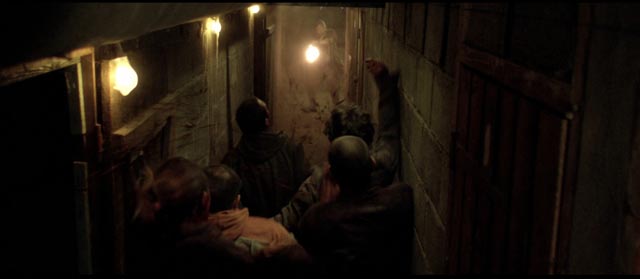
La horde (Yannick Dahan and Benjamin Rocher, 2009) is a French zombie movie which seems like a precursor to Gareth Evans’ The Raid (made two years later). An elite unit of cops launch an unauthorized assault on a high rise to take out an African gang leader responsible for the death of one of their partners. As they fight their way up through the building, for some reason the zombie apocalypse erupts in the surrounding city and the cops and gangsters are forced to work together in order to survive. Needless to say, the alliance repeatedly breaks down and as the night wears on there are fewer and fewer survivors. It’s all fairly by-the-numbers, but the French setting and characters add some interest.
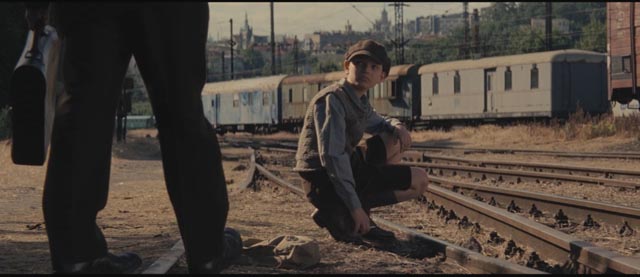
I’m not entirely sure what I think of Daniel Espinosa’s Child 44 (2015). It’s well-designed and atmospherically photographed and the cast is good – apart from the fake Russian accents (why do filmmakers still do this?). The story of a serial killer in Stalinist Russia, it’s based on a novel I haven’t read (by Tom Rob Smith); if comments on IMDb are to be believed, Richard Price’s script is a travesty of the source. The central thread of the story revolves around Leo Demidov (Tom Hardy), a policeman who dutifully hunts down enemies of the state, married to a woman named Raisa (Noomi Rapace) who lives in fear of him. When the young son of one of his comrades is killed, Leo gradually comes to question the system he’s a part of and works for; in the workers’ paradise of the USSR, there is no murder … and yet it becomes obvious that the boy is the latest victim of a prolific killer (hence the title). Leo goes against his orders, gets demoted and exiled … and yet won’t let the case go, eventually tracking down the killer and forcing his superiors to admit that murderers do indeed exist.
The story seems fairly sketchy, rife with coincidences and undeveloped threads; but as a portrait of an entire society caught in the grip of paranoia it generates a fair amount of tension. In this time and place the police are so busy inventing imaginary crimes and torturing confessions out of people who are then duly punished to cleanse the state that a sadistic pervert is freely able to slaughter dozens of children for his own gratification because that state refuses to acknowledge that he might exist. It’s a rather long movie, but it did hold my attention despite obvious weaknesses … and I was inclined to give it the benefit of the doubt until I went to see Espinosa’s new movie the following day. Life is such a dull bore (like his previous feature, Safe House) built on a huge pile of tired cliches that in retrospect I’m inclined to think that any positive qualities in Child 44 are likely to have been accidental.
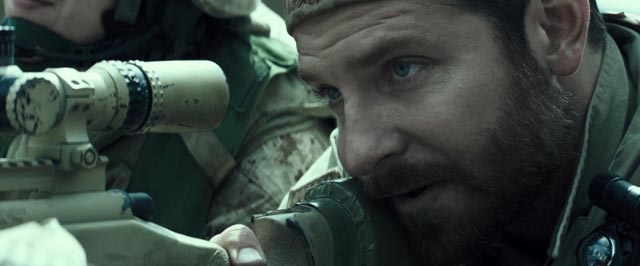
I wasn’t particularly interested in seeing Clint Eastwood’s American Sniper (2014) for a number of reasons, the primary one being the generally poor track record of movies about the Iraq war. On top of that was the focus on a sniper, a figure which stands out as particularly problematic in the moral confusion of war. Unlike the combat soldier, a sniper hangs back under cover and picks people off from a distance. There’s something cold and calculated in this, something which stands out from the bloody mess of battle and looks more like murder. To a degree, Eastwood’s movie – based on the experiences of Chris Kyle (Bradley Cooper), a Texan who racked up the highest number of kills in U.S. military history – does address this, but it does it in the usual dispiriting Hollywood way; that is, its concern is with the psychological and emotional cost of the war to this one particular American. If the war is a bad thing, it’s because it damages Chris Kyle. There’s little empathy expressed for the Iraqis; in fact, they are almost all murderous fanatics who deserve to die. There is no examination of why the U.S. was in Iraq (other than connecting the war to 9/11 as if the bogus rationale of the Bush regime was actually valid); here the war is an existential test posed for a patriot by an essentially inhuman other.
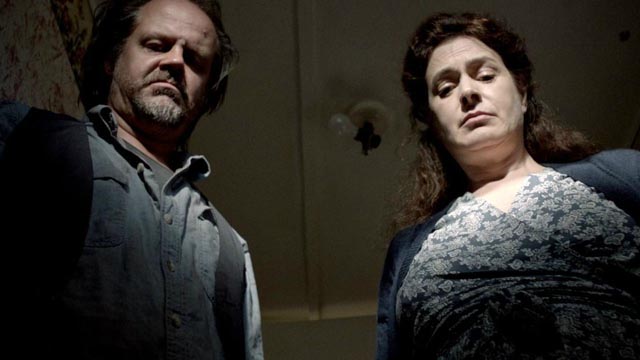
Chad Crawford Kinkle’s Jug Face (2013) is something far stranger, more original and definitely more satisfying. This odd first feature is a kind of backwoods folktale, drawn from the darker more isolated byways of America (with echoes of the fantasies of Manley Wade Wellman and the disturbing stories of Shirley Jackson). Somewhere in rural Tennessee a small community keeps itself cut off from the larger world. Their lives are ruled by a strange, primitive religion which revolves around “the pit”, a muddy hole in the woods in which lives some supernatural force which demands their fealty in exchange for maintaining their health. The community is held together by occasional sacrifices the subjects of which are chosen through the hands of Dawai (Sean Bridgers), a potter who occasionally goes into a trance in which he shapes a clay jug in the likeness of one of his neighbours’ faces. Things go wrong when Ada (Lauren Ashley Carter) discovers that the latest jug looks like her. While Dawai is still unconscious after his trance, she steals and hides the jug; as there’s no sacrifice, the presence in the pit gets angry and begins killing others in her stead.
Kinkle skillfully balances the film’s various elements – the portrait of a fundamentalist community in thrall to a demanding, bloodthirsty god; a creepy family drama involving incest; a young woman maturing in ways which are in conflict with her strict upbringing (echoing Robert Eggers’ The Witch) – and draws excellent performances from his cast, which includes Larry Fessenden and Sean Young as Ada’s parents. Jug Face has an unusual atmosphere, something like Lovecraftian horror played naturalistically. It treats its strange imaginative world with complete sincerity, and that’s very satisfying. Of all the disks I’ve recently acquired in HMV’s bankruptcy sale, this is perhaps the real find.
*
Other HMV closing sale Blu-ray purchases, in no particular order: Mark Robson’s Home of the Brave, Lewis R. Foster’s Crashout, Lesley Selander’s Flat Top, Sam Fuller’s Shark! (all from Olive Films), the Alfred Hitchcock three-movie Classic Collection, Andrew Jarecki’s The Jinx, Nate Parker’s Birth of a Nation, Tommy Lee Jones’ The Homesman, Joel Edgerton’s The Gift, Joe Berlinger’s Whitey, Ken Loach’s Jimmy’s Hall, Edmund Goulding’s The Razor’s Edge, Ridley Scott’s Exodus: Gods and Kings, Miguel Arteta’s Cedar Rapids, Sean Durkin’s Martha Marcy May Marlene, Martin Campbell’s Edge of Darkness, Andrew Davis’ The Fugitive, Justin Kurzel’s Macbeth, Dean Israelite’s Project Almanac, Ramin Bahrani’s 99 Homes, Jodie Foster’s Money Monster, Quentin Tarantino’s Kill Bill 1 & 2, seasons one and two of Fear the Walking Dead, and Bobcat Goldthwait’s Willow Creek.
Comments
Another victim of streaming is The Eclipse Series via Criterion. I loved buying The Eclipse Series dvd box sets as it was a great way to view obscure foreign movies. Now Criterion is streaming many smaller obscure movies, that don’t rate a dvd or blu-ray release.
That seems to be mostly true … but there is a new Eclipse set scheduled for release in January – four films made by Claude Autant-Lara during the Occupation – so the series hasn’t been totally cancelled.
I mainly collected the Japanese Eclipse Series box sets.
I was upset that Deep Dive:The Crime Thrillers of Studio Maverick Yoshitaro Nomura was not put out in a dvd box set.
Perhaps Criterion will have a change of heart some day….
I have a lot of the Eclipse sets, but I’d agree that the Japanese ones are the most interesting.